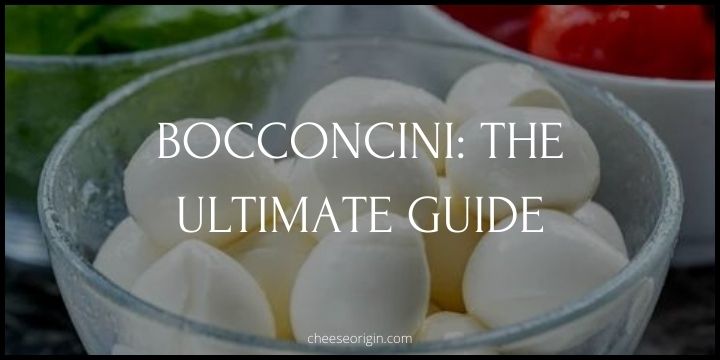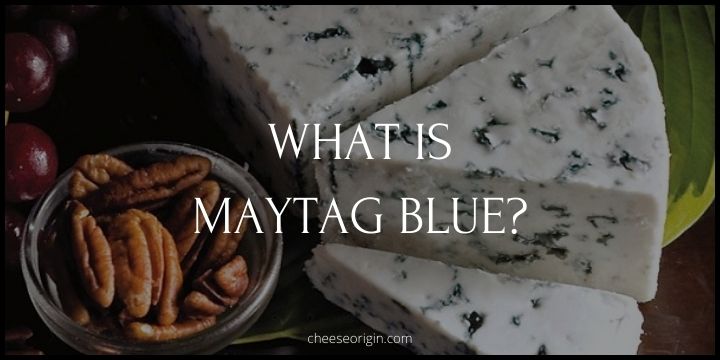What is Camembert? The Creamy Crown of Normandy

Welcome to the world of Camembert!
As a cheese lover, you’re likely familiar with this French delicacy, but have you ever truly discovered it? Have you delved into its fascinating origins, learned how to discern its quality, or explored the multitude of ways it can be enjoyed?
If not, buckle up, because you’re in for a truly delicious journey.
Quick Facts About Camembert
| Fact | Description |
|---|---|
| Origin | Normandy, France |
| Milk Source | Cow’s milk |
| Texture | Soft, creamy, and slightly runny when ripe |
| Flavor | Earthy, rich, and mushroom-like |
| Color | Pale yellow with a white bloomy rind |
| Aging Process | Aged for at least three weeks |
| Size | Traditionally made in small, round wheels |
| Uses | Often served at room temperature, baked, or used in sauces |
| Pairings | Pairs well with cider and fruity red wines |
| Nutritional Value | High in fat, protein, and is a good source of calcium |
What is Camembert?

Camembert is a soft, creamy cheese that originated from Normandy in France. It’s made from cow’s milk and has an earthy, rich, and mushroom-like flavor. The cheese is pale yellow in color with a white bloomy rind.
Camembert is typically aged for at least three weeks and is traditionally made in small, round wheels. When ripe, the cheese can be slightly runny in texture.
This cheese is often served at room temperature, but it can also be baked or used in sauces. It pairs well with cider and fruity red wines. Nutritionally, Camembert is high in fat and protein, and is a good source of calcium.
Why is Camembert so popular?
Here are 5 reasons why we think Camembert is a global delight:
- Rich Flavor and Texture: Known for its creamy texture and rich, earthy flavor, which develops more depth as the cheese matures. This distinct taste profile appeals to a wide range of palates.
- Versatility: Whether it’s served raw, baked, or used in various recipes, Camembert is a versatile cheese that can be enjoyed in numerous ways.
- Historical Significance: The history of Camembert dates back to the 18th century, adding to its allure. The popular origin story credits Marie Harel, a farm woman from Normandy, with its invention in 1791.
- Cultural Icon: As one of France’s most iconic cheeses, Camembert holds a special place in the country’s culinary culture. It’s the most popular cheese in France and one of the best known worldwide.
- Accessibility: Camembert is widely available and has become a staple in many households, not just in France but around the world.
Which is better Camembert or Brie?
The choice between Camembert and Brie often comes down to personal preference as both cheeses have their unique qualities and flavor profiles.
| Features | Camembert | Brie |
|---|---|---|
| Origin | Normandy, France | Île-de-France, France |
| Texture | Denser, slightly chalky in the center when young | Softer, creamy |
| Flavor | Earthy, intense, with nutty and mushroomy notes | Light, buttery, with subtle notes of fruit and mushroom |
| Rind | Bloomy, edible | Bloomy, edible |
| Pairings | Apples, pears, nuts, crusty bread, robust red wines | Grapes, almonds, baguettes, light white or sparkling wines |
| Shape | Traditionally made in smaller, thicker wheels | Typically made in larger, thinner wheels |
| Aging Process | Generally aged for at least three weeks | Aged for four to five weeks |
| Taste Profile | More robust and assertive | Milder and more buttery |
Brie:

Brie is known for its lighter, buttery flavor with subtle notes of fruit and mushroom. It’s milder and has a creamy taste. The texture of Brie is a bit softer compared to Camembert. This makes Brie a versatile cheese that can be paired with a variety of foods and drinks due to its refined taste.
Camembert:

On the other hand, Camembert exhibits a more pronounced earthy flavor. It is denser in texture and has well-pronounced nutty and mushroomy notes with a distinct acidic tang not present in Brie. Its intense and savory taste sets it apart.
If you prefer a milder, creamier cheese, Brie might be the better choice for you. If you enjoy a cheese with a deeper, more intense flavor, then Camembert could be the one for you.
Both are fantastic choices for cheese lovers and offer a wonderful taste experience.
How should Camembert be eaten?
Camembert is a versatile cheese that can be enjoyed in a variety of ways.
- Raw: Camembert can be savored as it is, at room temperature, to appreciate its full flavor. It pairs well with fruits like apples and pears, and it’s also perfect with crusty bread or crackers.
- Baked: Baking Camembert in its wooden box is a popular way to eat this cheese. The result is a warm, gooey, and deliciously melted treat. You can add garlic, herbs, or a drizzle of honey for extra flavor. It can be served with bread or crudites for dipping.
- In Recipes: Camembert can be used in a range of recipes from appetizers to main courses. It can be added to salads, sandwiches, or pasta dishes, or even used as a topping for burgers.
- Pairing with Drinks: When it comes to beverages, Camembert pairs well with robust red wines like Bordeaux or Burgundy. If you prefer white wine, a crisp Chardonnay can also be an excellent choice. For beer lovers, a fruity beer or stout can complement the cheese’s rich flavor.
The key to enjoying Camembert is to ensure it’s ripe and at its best. A ripe Camembert should feel springy to touch and have a strong, aromatic smell.
What does Camembert taste like? Tasting notes
Camembert is a soft, creamy, surface-ripened cow’s milk cheese that originated in Normandy, France. The taste of Camembert can be quite complex, and it changes as the cheese ages.
| Description | Texture | |
|---|---|---|
| Young Camembert | When it’s young, Camembert tends to have a fresh, milky sweetness with a slight hint of mushroom or earthiness. | The texture is creamy but firm. |
| Mature Camembert | As it matures, Camembert develops deeper flavors. It can become more pungent, with notes of garlic, barnyard, and even a slight bitterness. | The texture becomes even creamier, almost runny at room temperature. |
| Rind | The rind, which is edible, has a bloomy white appearance and contributes a subtle, mushroomy flavor that complements the creaminess of the cheese. | N/A |
Overall, the taste of Camembert is rich, buttery, and creamy with a distinct earthy and mushroomy flavor.
It’s important to note that the flavor can vary based on factors like the particular brand, how long it’s been aged, and whether it’s made with raw or pasteurized milk.
Is Camembert cheese healthy to eat?
Camembert cheese can indeed be a healthy addition to your diet when consumed in moderation.
- Nutrient-Rich: Packed with essential nutrients. It provides a good balance of saturated and unsaturated fats, including beneficial omega-3 fatty acids. It’s also a good source of protein and calcium.
- Satiety: The mixture of proteins and fats in Camembert makes it an ideal choice for those on a diet as it can keep you full for longer.
- Digestive Health: Some research suggests that certain types of cheese, including Camembert, can help balance out your gut flora, which is essential for maintaining good digestive health.
- Lower Fat Content: Despite its creamy texture, Camembert has less fat compared to some other cheeses.
However, like all cheeses, Camembert is high in calories and should be eaten in moderation. Also, due to its high sodium content, it might not be the best choice for people with high blood pressure or those following a low-sodium diet.
Can you eat Camembert everyday?
Cheese, including Camembert, is high in saturated fats. The American Heart Association recommends limiting saturated fats to less than 6% of total daily calories for those who need to lower their cholesterol.
Additionally, Camembert contains a significant amount of sodium. High sodium intake can lead to water retention and increased blood pressure, potentially leading to heart disease over time.
However, if you are healthy, active, and maintain a balanced diet, a small serving of Camembert could be included in your daily diet. It’s always important to remember the principle of moderation when it comes to rich foods like cheese.
Of course, individual health circumstances vary, and dietary needs can be different for everyone.
If you have specific dietary concerns or health conditions, it’s best to consult with a healthcare provider or a registered dietitian.
Is Camembert bad for cholesterol?
Camembert is a type of cheese that does contain cholesterol, but its impact on your overall cholesterol levels depends on various factors including the amount consumed and your overall diet.
According to FatSecret, one wedge of Camembert Cheese has about 27 mg of cholesterol. However, a study published on PubMed suggests that fermented cheese such as Camembert could be consumed daily without affecting serum lipids or blood pressure.
HealthCentral lists Camembert among cheeses that are lower in fat and cholesterol, indicating it has 20mg of cholesterol per serving. Comparatively, Foodstruct mentions that the amounts of cholesterol and saturated fat are also lower in Camembert when compared to Brie.
Nevertheless, like other dairy products and many animal foods, most types of cheese are high in cholesterol and saturated fat. Therefore, moderation is key.
Camembert Nutrition Facts
The nutritional content of 100 grams of Camembert Cheese:
| Nutrient | Quantity |
|---|---|
| Calories | 300 kcal |
| Protein | 19.80g |
| Total Fat | 24.26g |
| Carbohydrate | 0.46g |
| Sodium | 621mg |
| Cholesterol | 72mg |
Can you eat Camembert without cooking it?
Yes, you can definitely eat Camembert without cooking it. In fact, many cheese enthusiasts prefer to eat Camembert at room temperature as it allows the cheese to develop its full flavor profile.
To prepare Camembert for eating, remove it from the refrigerator about an hour before you plan to consume it to let it warm up. The cheese will become softer and creamier as it reaches room temperature, enhancing its taste.
However, if you prefer, Camembert can also be baked or used in cooking. It melts beautifully, making it a delicious addition to a variety of dishes.
Remember, whether you’re eating it raw or cooked, always store Camembert in the fridge when you’re not consuming it to maintain its freshness and prevent spoilage.
When should you not eat Camembert?
There are a few signs that Camembert cheese should not be eaten:
- Expired Date: Always check the expiration date on the packaging. If it’s past this date, it’s best to avoid eating the cheese.
- Unpleasant Odor: While Camembert does have a strong smell, if it starts to smell ammoniated, overly pungent, or just plain bad, it’s likely gone off.
- Mold Color: The edible mold on Camembert is white. If you see mold of other colors, like blue, green, or black, it has likely been contaminated and should not be eaten.
- Texture Changes: If the cheese feels slimy or excessively hard, it might be spoiled. Similarly, if the cheese is overly runny (more than just being at room temperature), it may be past its prime.
- Taste: If you’ve checked all the above and decided to taste the cheese, an overly sour, bitter, or just plain unpleasant taste is a sign the cheese is not good to eat.
Remember, when in doubt, it’s better to be safe and not consume the cheese.
Camembert Pairing Guide
What food goes well with Camembert:
| Food Category | Specific Foods |
|---|---|
| Fruits | Apples, pears, figs, grapes, and berries |
| Bread/Crackers | Baguette, sourdough, whole grain crackers, or artisan breads |
| Nuts | Almonds, walnuts, and pecans |
| Meats | Prosciutto, salami, and other cured meats |
| Condiments | Honey, fruit preserves, chutney, and mustard |
| Others | Dark chocolate, olives, and pickles |
Also read: What Fruit Goes on a Charcuterie Board?
What beverage goes well with Camembert:
| Beverage Category | Specific Beverages |
|---|---|
| Wine | Chardonnay, Champagne, Pinot Noir, Cabernet Sauvignon |
| Beer | Belgian Tripel, Stout, Amber Ale |
| Cider | Dry Apple Cider, Pear Cider |
| Non-Alcoholic | Sparkling water, Apple Juice, Grape Juice |
Also read: A Comprehensive Guide to Enjoying Cheese Platter with Wine
The Pros and Cons on Camembert
Benefits:
- Rich in protein: Camembert is a good source of high-quality protein which is essential for muscle growth and repair.
- Provides essential nutrients: It contains important vitamins and minerals, including calcium, vitamin B12, and phosphorus.
- Versatile in culinary uses: Can be used in a variety of dishes, from appetizers to main courses to desserts.
- Unique flavor: Has a distinct, rich flavor that many people enjoy.
Drawbacks:
- High in saturated fat: Like many cheeses, Camembert can be high in saturated fats which, when consumed in excess, can contribute to high cholesterol levels and heart disease.
- Not suitable for all diets: Camembert is not suitable for those who are lactose intolerant or following a vegan diet.
- May contain bacteria: Camembert, especially if made with unpasteurized milk, can contain harmful bacteria like Listeria.
- High in sodium: Consuming too much Camembert can contribute to an excessive intake of sodium, which can lead to high blood pressure and other health problems.
The History of Camembert and its Origin
Camembert cheese holds a rich history that dates back to the late 18th century. It was first made in 1791 by Marie Harel, a farm woman from the Norman village of Camembert, France.
The creation of this cheese is often linked with a story of a priest from the Brie region who gave advice to Marie Harel on cheese-making.
Camembert quickly gained popularity and became one of the most famous and loved French cheeses around the world. Its creamy texture and distinctive flavor profile contributed to its success.
The original Camembert was made from raw milk, though today, only a small percentage of producers maintain this traditional method.
Despite being a relatively new addition during the French revolution, Camembert has become a classic symbol of French gastronomy.
True Camembert is a small soft-rind bloomy cheese, which hails from Normandy, a northern region of France that borders on the English Channel.
While many variations of Camembert have been produced globally, the original Camembert de Normandie stands out for its authentic taste and quality, derived from its place of origin.
Frequently Asked Questions
1. Does Camembert melt well?
Yes, Camembert cheese is known for its excellent melting qualities. Both traditional, unpasteurized Camembert and pasteurized versions melt beautifully, debunking the myth that only unpasteurized Camemberts can melt.
A crucial factor to consider is the best before date of the cheese; it should feel soft to touch for optimal melting.
Baking Camembert transforms it into a creamy, gooey delight, perfect for dipping or as a spread.
It’s also worth noting that melted Camembert releases oils, enhancing its flavor compared to when it’s consumed at room temperature.
2. Should I keep Camembert in the fridge?
Absolutely, Camembert cheese should be stored in the refrigerator to maintain its freshness and prevent it from spoiling.
It’s best to keep it in the vegetable drawer where the temperature is more constant, as frequent temperature changes can affect its quality.
However, for the best flavor experience, remove the Camembert from the fridge about an hour before you plan to eat it. This allows the cheese to reach room temperature, at which point its flavors and aromas are most vibrant.
Always remember to wrap the cheese well or keep it in a sealed container to prevent it from absorbing other flavors in the fridge.
Also read: What’s the Best Way to Store Cheese?
3. Is Camembert smellier than Brie?
Yes, Camembert is generally considered to have a stronger smell than Brie.
Both cheeses are renowned for their distinctive aromas, but Camembert’s scent is often described as more pungent. This earthy, intense aroma is one of the key characteristics that sets it apart from its milder cousin, Brie, which has a lighter, more buttery scent.
The difference in smell between the two can be attributed to their unique production processes and maturation periods.
However, the degree of smelliness can also vary depending on factors such as the quality of the milk used, the specific techniques employed by the cheesemaker, and the age of the cheese.
Therefore, while Camembert is typically smellier than Brie, individual experiences may vary.
4. Camembert vs Brie for cheese platter
When building a cheese platter, both Camembert and Brie can be excellent choices, each bringing its own unique qualities to the table.
Brie is often favored for its mild, creamy, and slightly buttery taste, making it a crowd-pleaser that pairs well with a variety of accompaniments like fruits, nuts, and honey. It’s an ideal choice if you’re aiming for a broader appeal.
On the other hand, Camembert offers a more intense flavor and aroma, with a slightly earthy and mushroomy profile. This makes it a great pick for those seeking a more adventurous taste experience.
It’s also worth noting that while both cheeses have a similar soft, gooey texture, Camembert tends to be a bit runnier when ripe, which can add an extra touch of decadence to your platter.
Ultimately, why not include both? Click here to read The Perfect Cheese Board: Top 10 Cheeses You Must Include
Offering a mix of milder and stronger cheeses can cater to a wider range of palates and make your cheese platter more interesting.
Also read:
- A Journey into Casu Marzu aka ‘Maggot Cheese’: The World Most Dangerous Cheese
- Manchego 101: An Insight & Guide into Spain’s Most Famous Cheese
- The Ultimate Guide to Colby Cheese: America’s Own Dairy Delight
- Cheese Curds: The Unsung Heroes of the Dairy World
- The Science of Cheesemaking: A Journey from Milk to Artisanal Delight
- Cheese Balls 101: A Journey through Flavors and Textures
- Is Processed Cheese Good or Bad? Let’s Find Out!





